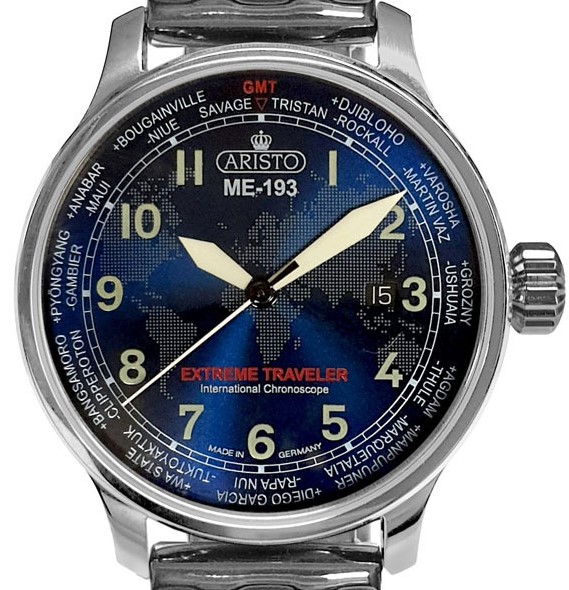29.10.2017
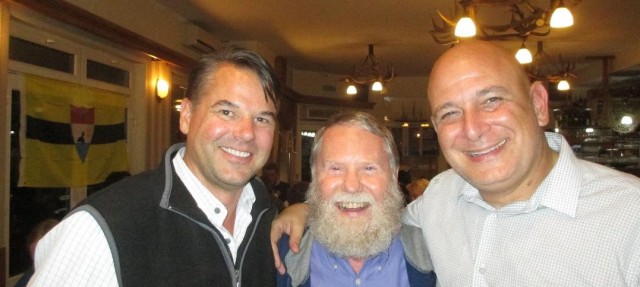
Extreme Travelers Charles Veley, Don Parrish, Harry Mitsidis (@ ETIC 2017 in Liberland)
Essay:
Who is the world’s most traveled person?
And how did “country collecting” evolve to “systematic travel”
by Kolja Spori, Founder of ETIC – Extreme Traveler International Congress
As of 2017, more than 530 people have traveled to outer space, but less than 180 people have traveled to all countries.
Outer Space vs. UN Countries
Outer space has been defined as any flight above 100 km (the Karman Line), according to the FAI. The definition of a country is more difficult: the UN lists those states whose sovereignty is undisputed (190 states) and those states whose sovereignty is disputed (6 UN member states, 1 UN observer state and 9 other states), resulting in a total list of 206 UN countries. For most “country collectors”, the list of the 193 UN member countries is the standard list today.
Amateur Radio Ham List & DX Century Club
The first country collectors were philatelists who sought postage stamps from every issuing nation. Later the term country collecting was used by Amateur Radio (= Ham) operators who successfully connected on the air with callers from other nations or subdivisions, acccording to the ITU‘s recognized list of international call signs, which became known as the Ham List. As of 1926, the IARU honoured ham operators who “worked all continents”, and as of 1937 those with at least 100 countries called, to become members of the DX Century Club.
Bert Hemphill’s Traveler’s Century Club
Based on the idea and the name of the Amateur Radio DX Century Club, in 1954 the Traveler’s Century Club (TCC) was founded in Los Angeles by travel agent Bert Hemphill (1896-1976) and a group of travelers (incl. R.G. Davidson, according to the NY Times). This club now has more than 1.400 members around the world. The TCC list includes not only sovereign states but also territories, exclaves and island groups, amounting to a total of 325 entities. The first traveler to visit all items (315 at the time) was John Clouse in 1995, when he was also mentioned in the Guiness Book of Records as the most traveled person. Up to today, only 23 travelers have successfully completed the TCC list. The rules of TCC require no more qualification for a legal visit than touching the ground.
 Bert Hemphill
Bert Hemphill
Alan Hogenauer’s Systematic Traveling
TCC was the first step from “country collecting” towards “systematic travel”, an academic term coined by Alan Hogenauer (1942-2013), Professor of Tourism & Travel at Loyola Marymount University in Los Angeles, in the early 2000s. The benefit of systematic travel, according to Hogenauer, is one of completion (that you haven’t left anything out) and an understanding of the various categories into which things fit. Hogenauer collected in several different travel categories and was the first to have visited all of the US National Park Service sites. He also emphasized that travel itself is an educational experience.
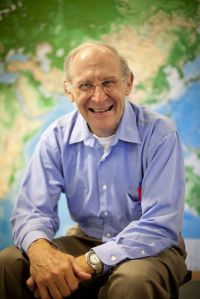 Alan Hogenauer
Alan Hogenauer
Quantity vs. Quality
However, Prof. Hogenauer may have been overly optimistic about education through travel. One persistent debate in systematic travel circles is the question of “quality” of a visit, or even “quality” of a traveler (“the best”). In my opinion, systematic travel should focus on quantifiable, objective criteria, and not on subjective qualities. That implies the use of TCC rules (“simply touching the ground”) as the only objective criteria for the legality of a visit. The qualities of travelers are just too diverse to take into account. Contrary to my expectations, several of the top-listed people still travel like tourists, with pre-set itineraries, bookings through travel agents, using tourist guides, visiting “the usual suspects”, state museums, monuments, religious sites, or other official prescriptions from the tourist guide books, taking snapshots, carrying checked luggage in big suitcases, nevertheless wearing constantly the same colorful sandals, shorts and daypacks. Maybe that is in in order to clearly differentiate from the resident native. There is not really a problem with that. To each their own. Live and let live!
However, it is often from these, may I say “less sophisticated” circles that emanates more demand for “quality” of a visit, be it staying at least one night in a country, or walking a kilometer, or having a pee or a poo on a local pot, whereas others aspire to have sex for the country point, or to climb the highest mountain, or to read a patriotic poem in the national library. The intellectual and physical capabilities of (non-space) travelers are diverse, to say the least. In my experience, the educated traveler with good antennas will see more during an airport transit, than the average tourist will ever see during a two week stay. A good example of a traveler with a quick-witted, sophisticated understanding of how a place works is Charles Veley.
Charles Veley’s Most Traveled People
Charley Veley was the youngest person to finish the TCC list in 2003 at age 37, and saw the necessity to bring systematic travel to a new level. Since the year 2000, the Guinness Book of World Records declared itself unable to continue to judge the Most Traveled category. Guinness requested that a legitimate 3rd party organization pick up this task, so Charles Veley founded MostTraveledPeople.com (MTP) in 2005. MTP’s original list of 573 countries and territories began by combining the TCC, DXCC, and John Todd lists. Since 2007, MTP members have voted added items to the list, now amounting to 875 entities. Charles Veley and MTP received substantial international media coverage. The easy access of the upcoming internet, the convenient box-ticking for countries and territories off an online list, and the cost-free virtual club membership, all promoted systematic travel as a new genre to wider audiences. The standard of a visit according to MTP developed over time to a slightly stricter version than the TTC standard, demanding a passport stamp, affidavit or fotographic proof.
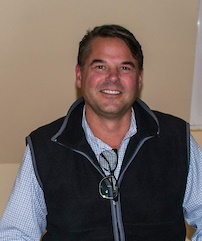 Charles Veley
Charles Veley
Harry Mitsidis’ The Best Travelled
Harry Mitsidis launched TheBestTravelled.com (TBT), later labelled NomadMania.com, in 2012 as an answer to his perceived downsides of MTP, such as over-representation of small European countries (Switzerland counting with 26 cantons) to the detriment of big developing countries like Kazakhstan or the Congo (counting just one point). TBT divides the world into 1.281 regions, in addition it provides a somewhat subjective UN+ List of 267 “countries”, and it introduced the TBT Series, which ticks off cities, sights, museums, islands, airports, etc. Because of its hyperactive founder Harry Mitsidis, its high quality web presence, and the simultaneous counting of TCC and other lists, TBT is now the most frequented systematic travel community. TBT is the only systematic travel club that actually verifies the visits claimed by top travellers. TBT also lists those travelers that have been to every UN country as UN Masters. The standard of a visit according to TBT goes beyond MTP and asks for a minimum time or activity undertaken in each entity.
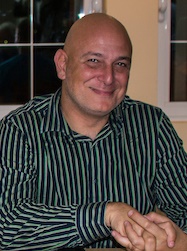 Harry Mitsidis
Harry Mitsidis
Jeff Shea’s SISO
As much as TBT tried to establish more objective criteria than MTP, this can truly only be said for Jeff Shea’s International Standard Organisation List (SISO) that divides the world into 3.978 legal provinces, based on the International Standardisation Organisation (ISO). Shea uses the ISO 3166-2 list (each country submits its sub-national territory list to the ISO in Geneva), plus his additional Official Unlisted Places list, which comprises the small remainder of territories (47) that are not covered by ISO. Shea is more than a tourist or traveler, he is an expeditioner who has even systematically collected the highest mountains on every continent (the “Seven Summits”), and that means physically climbing to the top, without any definition controversy. While Shea’s Register of the World is a complete, organized gazetteer of the world’s divisions and locations, it seems almost too detailed or “pixeled” for most travelers to follow, in particular when small countries like Slovenia happen to be legally sub-divided into 212 entities.
 Jeff Shea
Jeff Shea
Other Lists & Claimants
There used to be a French-centric systematic travel club, founded by Rached Trimèche in 1982, under the name of Club International des Grands Voyageurs (CIGV), with an impressive member list of famous names, and a subjective country list with 246 items, but unfortunately it seems not operational anymore.
The most subjective list in the bonfire of vanities that sometimes surrounds systematic travelers has been devised by Frank Grosse-Oetringhaus who combined a rather random selection of existing lists in a secret algorithm to declare “The Best Traveled Man on Earth: Best in Quality Based on Highlights”. The winner is, surprise, surprise, … Frank Grosse-Oetringhaus himself.
Other systematic travel lists are Sascha Grabow’s Greatest Globetrotters (GG), or Els Slots’ World Heritage Site List (WHS), or Stefan Krasowski’s Every Passport Stamp (EPS), or Jorge Sanchez’ Travelers Exploits Club (TEC).
The quasi-iconic Jorge Sanchez and Heinz Stücke (who circled the length of the equator 16 times by bicycle) and a handful of others represent a type of traveler that tends to cause controversy. They travel slowly and continuously for long periods of time (30 to 50 years), they tick off more TBT boxes than anyone else, they rarely return home, they live on a shoe-string and often depend on donations or invitations by locals, they don’t have a smart or even a mobile phone, and they have basically cut ties with civilian existence. They possibly suffer from extreme dromomania where the dosage has become a venom.
Paradoxically, these compulsory wanderers try to make a virtue out of their handicap by praising themselves as the “better” travelers than those who have kept control over their homes and who don’t leave before they made enough money for the next trip. According to the vast majority, travel is an ethical undertaking because the good traveler sustains the local economy with his money instead of leeching on it. The same vast majority will not accept sleeping in abandoned houses or on park benches as travel, but rather call it misery or drifting. The vast majority will not abandon their civilian existence at home. The more these “over-the-border” personalities self-glorify their quest for the world, the more they become “weltfremd” (unworldly).
Update 07.02.2019: this interview is a ‘good’ example https://globalgaz.com/sascha-grabow-counting-countries/
While I have high respect for the individual achievement, I still suggest that anti-societal drop-out “philosophies” are not overly promoted in lists or clubs who try to identify the “best or most traveled person”.
 Jorge Sanchez
Jorge Sanchez
Bad Press vs. Good Press
There are other extreme travelers who voluntarily do not want to be visible in systematic travel lists. One of their rightful motivations may be anonymity from the press, staff or business competitors which is perfectly understandable. The other motivation, however, may be a wrongful, deliberate abuse of the system. Anyone wishing to promote themselves, their books, or their products with the term “most traveled” needs to stand scrutiny and verification before the community of systematic travelers. Recent examples of “abusing the system” were Michael Spencer Bown with his book “The World’s Most Travelled Man” and Cassie de Pecol who claimed in media worldwide to be the “first woman to travel to every country”. The reason why both travelers never tried to make it into any systematic travel club or list, is that they would never have been able to sustain their claims. These were obviously just fake claims which are convenient for making themselves more marketable. Or fake news which are easy to copy and paste for the lazy media.
There is one international journalist who has completely understood and correctly covered the phenomenon of systematic travel, and that is Dave Seminara who works for The New York Times and the BBC. Even Guiness fell for Cassie de Pecol (or the promotional and financial advantages of a young, marketable US claimant) and overlooked the achievements of at least ten other female travelers who had also been to every UN country before Cassie. The typical sign of a fraudulent “most traveled” claimant is that they do not at all make reference to other travelers or systematic travel clubs in their interviews or writings. As if they didn’t know better …
 Dave Seminara, Top US Travel Journalist
Dave Seminara, Top US Travel Journalist
Update 30.05.2018: Is the Media spreading Fake News? by Janice S. Lintz and The Women who Have Traveled to Every Country in the World (Media Fact-Checking Guide) by Stefan Krasowski
Now, who is indeed the world’s most traveled person?
There are only a few people who have legitimacy to answer the question who is the “world’s most traveled person”, because they are the leaders of today’s systematic travel clubs: Harry Mitsidis of TheBestTravelled.com, Charles Veley of MostTraveledPeople.com, or the President of TravelersCenturyClub.org, which is currently Pamela Barrus and soon JoAnn Schwartz.
In my opinion, any claimant to the travel crown needs to have completed the 193 UN members list and the 325 items of the Traveler’s Century Club. He or she must be the top of the list traveler of either Most Traveled People or The Best Travelled. And that person must have been verified by The Best Travelled, or run a public blog that documents all trips. He or she must be known as a positive ethical example, in good standing within the core of the systematic traveler community, and able to market itself credibly with a wide reach to the international media, thereby benefitting the larger systematic traveler community.
By that definition, I would say that the crown of the “world’s most traveled person” was handed by the first emperor, Charles Veley, to the current king, Don Parrish.
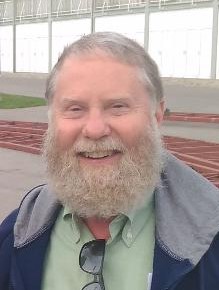 Don Parrish
Don Parrish
Literature about “systematic travel”:
Llewellyn Morgan Toulmin, The Most Traveled Man on Earth
John Todd, Race for the World
Jorge Sanchez, Meetings with Remarkable Travelers
Kolja Spöri, Ich war überall
Ryan Trapp, Chasing 193, I + II
Gunnar Garfors, 193 – How I ran out of countries
–
Radio show about “systematic travel”:
Ric Gazarian’s Counting Countries
–
Lists of “systematic travel”:
206 UN countries: https://en.wikipedia.org/wiki/List_of_sovereign_states
325 TCC points: http://travelerscenturyclub.org/countries-and-territories/alphabetical-list
875 MTP points: https://mosttraveledpeople.com/STAGE_Print-List.php
1.281 TBT points: https://nomadmania.com/
3.978 SISO points: http://jeffshea.org/wp-content/uploads/2014/11/SISO-Shea-ISO-list-Jeff-Shea-Travels-Master.pdf
–
